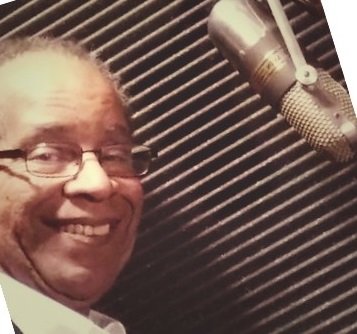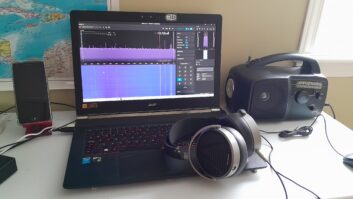The author is owner and chief engineer of WGTO(AM) and translator W246DV in Cassopolis, Mich. His commentaries are a recurring feature at radioworld.com.
So I got an email from an engineer a couple of states away. He signed on to do contract work at a 1 kW Class C and said it needs my touch to make it sound right.

I love making little stations sound big so I could not resist. He informed me that the station had an Orban 9200 and an Omnia-5 AM. While a bit long in the tooth, those are not bad boxes, and I looked forward to seeing what we could do, especially since the transmitter was a nice Nautel XR3.
I listened on the way in, and the station was loud but not very clean. Since we had two processors, I opted to do one of my experiments.
I tuned the Orban and the Omnia to sound as close as possible to each other so there was little change when doing an A/B.
That took a little doing as the boxes use different processing schemes, but each was adjusted to the point that pushing harder would sound distorted on the air monitor, a set of EV Sentry speakers driven from the Delta mod monitor with roll off. The mod monitor was pretty much hanging at 99 percent.
My car radio has an audio tap that I drive my laptop with and watch audio on an Orban loudness meter. We drive 4 miles from the transmitter and then the fun began. The Orban 9200 cannot be adjusted for output level via remote, so the experimentation was done with the Omnia. Both the Omnia and the Orban were showing the same on the CBS loudness scale. But the audio did have some distortion in the car even though it was not apparent on the transmitter mod monitor.
[Check Out More of Radio World’s Tech Tips]
I lowered the output of the Omnia to peak at 85 percent. And yes, the loudness dropped a hair, about 2 dB on the momentary scale. I retuned the Omnia to increase the clipping a smidge to match the loudness of the Orban at 99 percent modulation. Remember that at the transmitter we were maxed out just under the point of distortion, but after lowering the modulation we could push the Omnia to pick up the 2 dB, but we gained a easy to hear smoothness from less drive on the radio detector. The station sounded as loud on the CBS meter at 85 as it did at 99 percent. But more important it was so clean! We went back and flipped the processors doing the same thing and the Orban was able to be pushed at 85 to outdo the Omnia at 99.
How is this possible? Elementary, Watson. The typical AM radio cannot cleanly process dense modulation that has the needle almost steady at 99 percent. The detector delivers a distorted signal to the following stages, and it cannot be fixed. However, increasing the clipping with care and lowering the modulation to 85 percent can allow the detector to operate in its linear zone and keeps overhead available. The clipping is tolerated better and sounds equally loud but cleaner which reduces tune out for better TSL. Note, the main change was slightly increased clipping after lowering peaks … we did not increase compression as that can lead to fatigue.
The contract engineer and I went to Culver’s and had a great lunch while marveling at the improved sound without a loss in loudness.
Is this something original? Not by a long shot, it’s the way the legendary CKLW was run as it was the North American rock and roll monster back in the ’60s. Negative modulation rarely exceeded 86 percent but was artfully clipped. Rumor has it that was one of the things that made Chief Engineer Ed Buterbaugh such a processing legend at the Big 8.
Today’s processors and transmitters are very efficient, but the typical radio is basically still designed with limitations that must be considered in the overall listening experience!
CKLW was one of the best-sounding AM stations ever. So if you are in the mood to try his method, have at it. Lower the mod peaks and increase the clipping slightly to find that sweet spot and enjoy!







